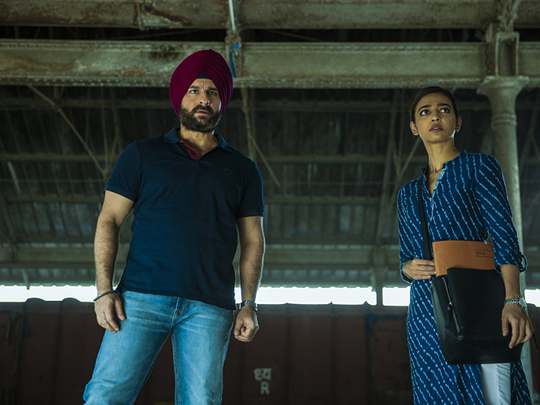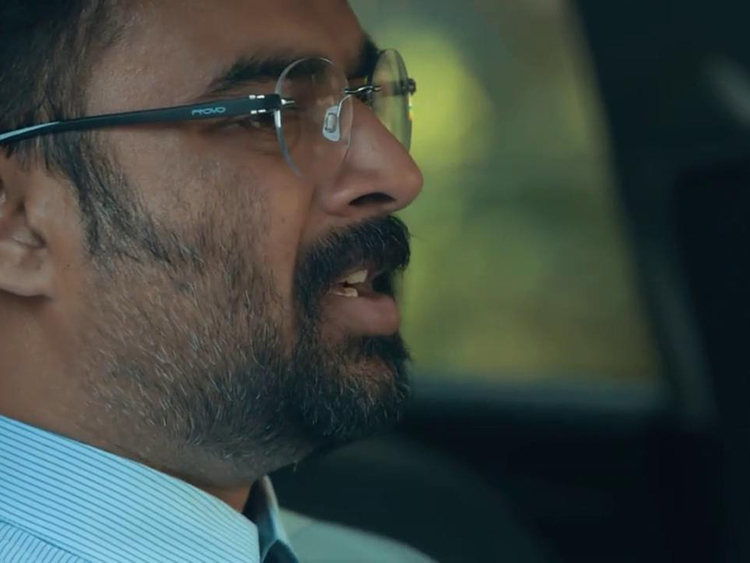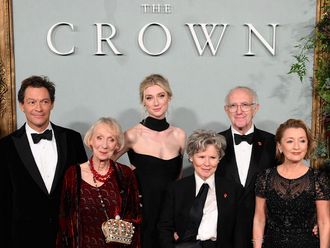
What’s the common thread between ‘Sacred Games’, ‘Mirzapur’, ‘Breathe’, ‘Inside Edge’ and ‘Ghoul’? They featured big Bollywood stars and were massive hits, but not on the big screen.
It was in 2017 that streaming platforms made their presence felt in the Indian market. This year, its world expanded with a robust roster of content.
“Content emerged as the undisputed king, not just in a proverbial sense, but even in terms of what clicked with the audience,” said Siddhartha Roy, chief operating officer of Hungama Digital. “Since the audience is becoming increasingly diverse, storytellers have the option to explore narratives that resonate at a hyper-local level, yet, can be appreciated by a global audience as well.”
The shrinking size of screens is in no way a measure of the size of the entertainment.
Saif Ali Khan and Nawazuddin Siddiqui were entwined in a gangster tale in ‘Sacred Games’, while Radhika Apte took on the paranormal realm with ‘Ghoul’.
R Madhavan captured the plight of a father in his digital debut ‘Breathe’ and Ali Fazal and Pankaj Tripathi narrated a story of lawless land filled with action with ‘Mirzapur’.
There were others that also made a mark. Aravind Adiga’s 2016 novel ‘Selection Day’ became subject of a web series and Mithila Palkar and Dhruv Sehgal navigated the complicated world of relationships with the second season of ‘Little Things’.
“Audiences today have become more accepting to new concepts. This has lead to major OTT players now heavily investing in exclusive original content across languages on the platforms,” said Sunil Lulla, Group CEO at Balaji Telefilms, the firm behind ALTBalaji.
“International players coming into India also recognised the need to tailor their diverse content catalogue to suit the preferences of the Indian consumers... Content diversity and an increase in regional stories can be seen visibly,” said Bimal Unnikrishnan, Vice President, Content, Viu India.
He pointed out that “local talent is gaining more recognition than ever before; more niche stories are also being told”.
Manish Aggarwal, Business Head, ZEE5 India, said that the “digital viewer is seeking fresh, edgy, relatable and engaging content every day”.
“This is changing the landscape of the content being produced. Identifying these needs have led us to come up with new concepts that revisit the basics of content,” he added.
Be it Netflix, Amazon Prime Video or Indian platforms — the growing number has proved to be a boon not only for the audience and operators but also for the creators.
“The digital medium has opened doors towards creative freedom. It has eliminated the gate-keepers or the censorship, which means that if you have a great concept, you can step up and share your content, tell your story in a manner that resonates with you,” Unnikrishnan said.
“It does promise freedom, for the time being,” said Sandeep Bhargava, CEO at Purple Pebble Pictures and Advisor Board Member at Sanjay Dutt Productions. “The best part of this medium is that it is not star-dependent and that helps in democratising the choice of subjects, which is always good. It allows for freedom to showcase ideas without the censorship sword.”
But freedom comes with some sense of responsibility, Roy pointed out.
“The internet is easily accessible to all, including children, while that poses a great responsibility upon platforms and content creators like us, it is also a huge opportunity in terms of providing our consumers differential/unmodified content,” he said.
Apart from the content, several factors converged to make India a lucrative market for the platforms.
“This year has been an absolute game-changer with regard to the changing perception of digital audiences. The growth in mobile broadband speed and 4G services by Reliance Jio saw a rapid increase in data consumption across the country out of which video streaming accounts for 70 per cent of the total data consumption on mobile,” Lulla said.
In the same vein, Roy added: “While content played a key role in the growth of the market, some important factors that fuelled the same were Internet penetration as well as data affordability and availability of affordable smart devices.”
And it’s just the beginning.
According to a report, the Indian streaming market will reach $5 billion (Dh18.3 billion) in size by 2023. Another states that 75 per cent of content will be consumed on OTT platforms in 2021.
The major driver of this growth will be regional content.
“From a future perspective, the three main pillars will be content, data and technology, with regional content driving the growth in 2019,” Aggarwal said.

















